

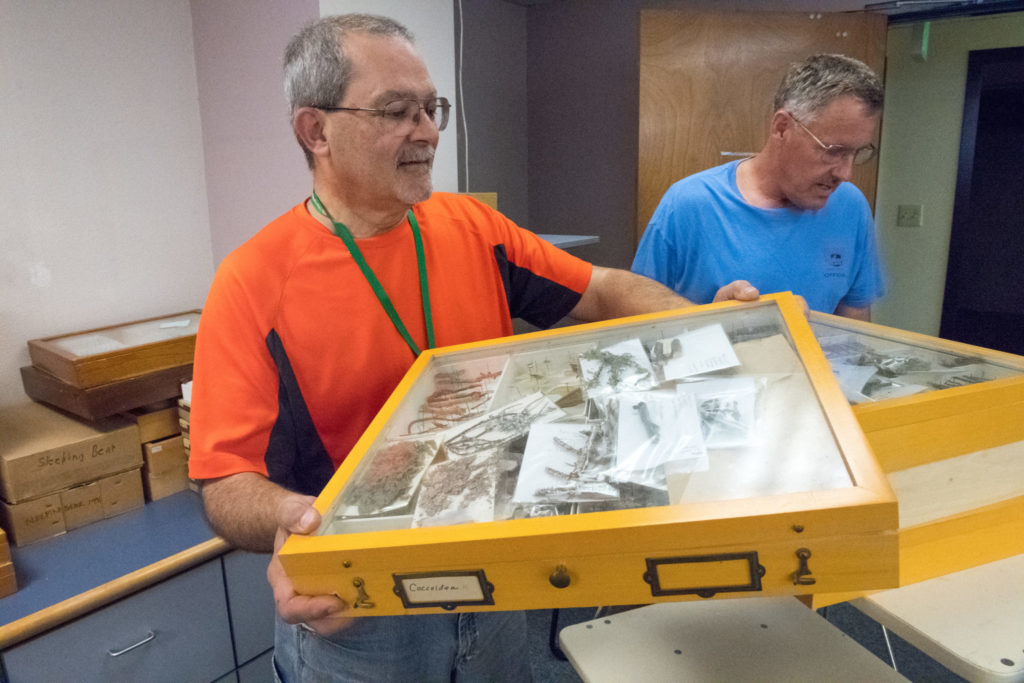
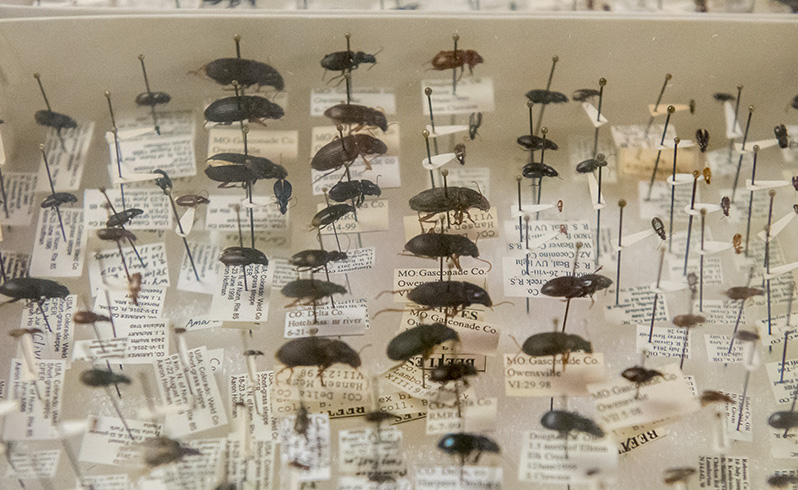
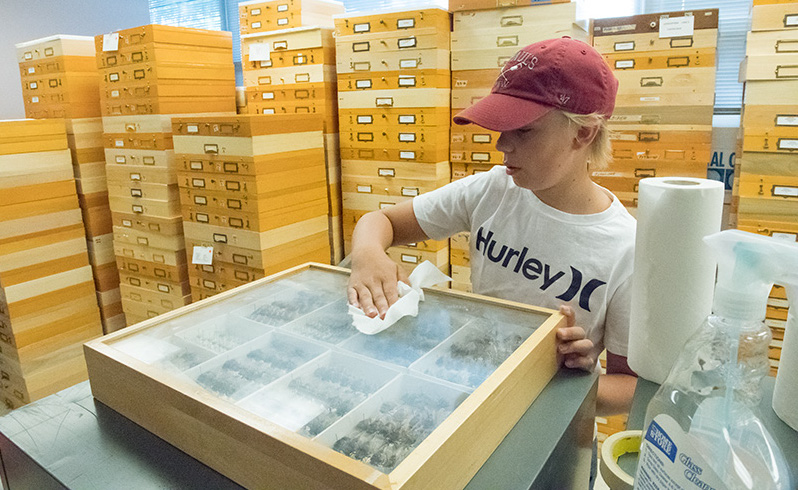
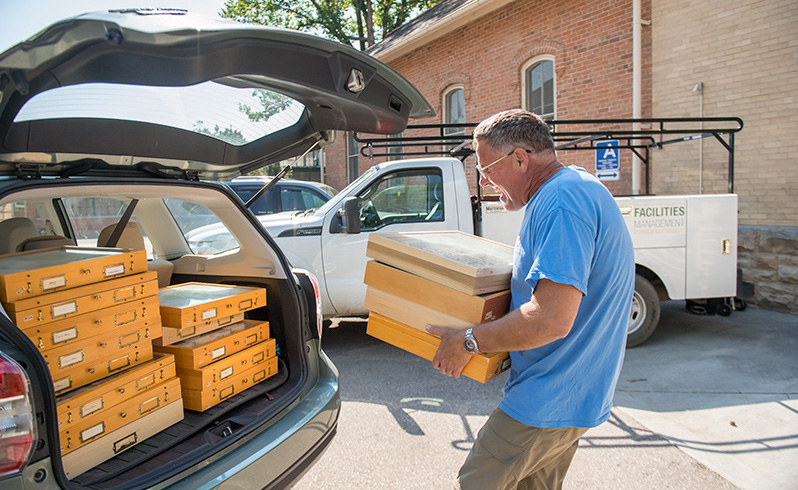
In the heart of Colorado State’s campus, on the basement floor of the Hartshorn building, resides one of the most terrifying insects in North America. Known as the tarantula wasp, this four-inch winged creature has an affinity for hunting fuzzy tarantulas. It also boasts one of the most painful stings you can encounter in North America.
So, what should you do if you happen upon this nightmarish insect? Don’t run; that won’t help. Instead, ask research associate Chuck Harp for help. He’ll tell you all about the wasp, which is safely pinned inside a display case.
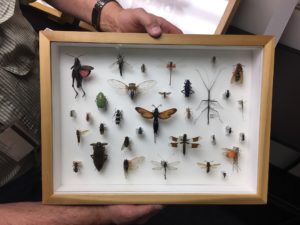
The tarantula wasp is just one of the many draws of the C.P. Gillette Museum of Arthropod Diversity. Technically, it’s just one of 3.5 million specimens; a staggering collection of insects that represents 80 percent of the grasshopper varieties found in the country. For decades, the collection was housed inside Laurel Hall on the historic CSU Oval, but a lack of space and funding couldn’t keep up with the growing collection. Specimens were tucked away wherever there was space: windowsills, dusty office corners, hallway space, and even at the homes of research associates and volunteers. That is, until this past August, when the collection finally found its new home in Hartshorn, a move that was roughly 17 years in the making.
“There were piles of specimens on desks, and dust,” Harp says with a chuckle. “We’d certainly outgrown it.”
Inside the museum
Standing at the reception area of the museum, Harp is excited to show visitors around the sprawling collection. Stacks upon stacks of filing cabinets house millions of insects, now organized phylogenetically (i.e., by their evolutionary history). It’s a benefit the museum crew — led by director Boris Kondratieff, professor of bioagricultural sciences and pest management — can enjoy after expanding their footprint from a cluttered 2,200 square feet in Laurel to a streamlined 9,000 in Hartshorn. One of the “biggest plusses,” according to Harp? The museum’s impressive collection of 90,000 aquatic specimens finally housed in one, organized space.
Of course, the new space comes with its charming quirks. The move wasn’t exactly easy, either. Formerly a medical facility, the basement floor of Hartshorn still shows hints of its past. Examination rooms have transformed into offices. The towering filing cabinets that once contained medical records are now home to insects, which fill out the entirety of the former physical therapy space. The move itself was an undertaking, a week-long endeavor involving a local moving company and the help of staff and volunteers who transported drawers of specimens in their own cars.
Looking ahead
The new location is already paying off. Harp, who specializes in moths and butterflies, is using the space to further his photo documentation of specimens for LEPNET, a NSF grant project that “includes 28 universities participating in adding documentation to a database,” according to Harp. The end goal is LepSnap, a field app for smartphones, which allows users to identify insects on the go.
The museum is also more accessible to the public. Tours have trickled in, as well as curious members of the public. The occasional concerned community member also pops in a few times a week to drop off samples for Kondratieff to examine. According to Harp, their questions vary from “This looks weird,” to “Is this a bed bug?”
As for the collection, with 3.5 million specimens already on hand, when is enough, well, enough?
“I don’t know,” Harp says with a smile. “The donations just keep coming in.”
Did you know?
- CSU’s Entomology Club is the oldest student organization at CSU, founded in the early 1900s.
- The C.P. Gillette Museum is home to 3.5 million specimens.
- The museum represents 80 percent of grasshoppers in the U.S.
- The museum’s aquatic collection contains 90,000 specimens.
- The museum is open to public tours; learn more.